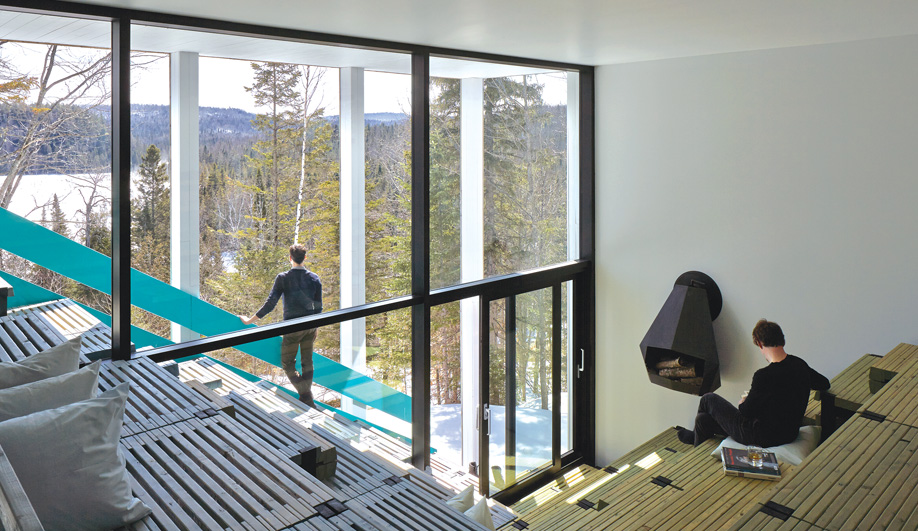As workforces become increasingly blended with a range of full-time, part-time, contract, and remote workers, many companies are looking to unassigned workstations to make the most of their office space.
To find out more about this trend, we talked to Robyn Baxter of HOK Canada, a global architecture firm with dozens of corporate offices and interiors worldwide in its portfolio (including its new Toronto office, shown).
The changing face of the workforce
Researching the ways people work is an important part of what HOK does, so Baxter is intimately familiar with the way blended workforces are changing the way desks are assigned.
“On any given day, around 60 per cent of desks are empty,” Baxter explains. “We know 20 per cent of them have signs that somebody is sitting there that day; they’re just away at the moment. But 40 per cent of the time, there’s no sign of life – nobody is sitting at that desk on that day.” It begs the question: with the rising cost of real estate, why spend money on space, heating, and lighting when there’s nobody there to use it?
Hot desks – that is, unassigned desks that are available for use by anyone who needs one – are a way to use space more efficiency when people don’t regularly occupy the same spot. This is, however, less popular for employees rooted to their workstations every day – what Baxter calls “resident-type workers.” After all, why uproot people without a reason?
But resident-type employees are making up an increasingly smaller proportion of office staff; they’re now working with full-time remote workers, part-time employees, and people on short-term contracts. It’s possible to accommodate all their needs with unassigned desks, and to do it more efficiently, too.
One size does not fit all
When creating an employee workspace – even a temporary one – it’s still important to give them a personal bubble with the space they need to work effectively.
“Whether it’s accurate or not, there’s an assumption that a hot desk is small – an open bench, typically,” Baxter says. “We have a client whose space is 100 per cent unassigned, so nobody has a desk with their name on it – but the desks they can choose to sit at include everything from a bench to a private office. They can choose which one best suits their needs based on the tasks they have that day. Choice is key.”
The many different ways an employee might work should inform the options an office offers. Maybe a chair in the reception area is adequate for someone stopping in for a quick chat, or to send a few emails from a laptop. In an open-concept office, flexible breakout zones (including meetings rooms, quiet zones and even kitchens) can also serve as touchdown spaces for short periods, and there are plenty of furnishings that cater to working styles of all kinds. “Giving everyone enough variety and quantity of choices is what makes it work,” Baxter says. “Many organizations are looking for a balance, with part of their population in a traditional setup, and the other more mobile and flexible. It’s about what works for them.”
Being a good host
Whatever forms your unassigned workspaces take, it’s important to make it as simple as possible for people to transition in and out of them. Investing in the right technology is often a great help. Reserving spaces, especially in larger offices, can be contentious – particularly if people are in competition for the choicest spots. Here, it’s crucial to have an effective scheduling tool (there are dozens of software options available for booking meeting rooms), and to train your employees until they’re comfortable using it.
Making unassigned workstations adaptable to accommodate different employees is important not just for efficiency, but for employee comfort as well. Consider stocking the kinds of amenities that resident-type workers have, but more transient workers don’t – think hand lotion and sanitizer, gum, headphones, and painkillers. These don’t need to be left like care packages on the desktop; individual items can be centrally located in bathrooms or breakout areas.
While these little gestures speak volumes about how you value your employees, don’t forget to keep the basics in mind – things that make plugging in easy. Besides the usual office supplies, unassigned workstations should be furnished with a range of chargers and cables. And don’t neglect the things that let employees customize their space, including adjustable-height chairs and worktops, as well as lighting and temperature control.
If money is no object, there are systems that can recognize a returning user and adjust accordingly. “Think about your car,” says Baxter, “and as you approach it with your key fob, it adjusts the steering wheel, the seats, the temperature, and the radio station where you like them. That technology is already being applied to workspace – so imagine you walk up and set your smartphone down on a desk: the light overhead dims or brightens, the desk raises or lowers…”
While such high-end solutions are not in everyone’s budget, accommodating your transient employees as much as possible is worth the investment – especially if you’re trying hot desking for the first time. “Don’t underestimate the user-behavior piece of the puzzle,” Baxter advises. “You have to be attentive to people’s apprehensions about moving to something new, and once they’re there, giving them the tools, the training and the ability to be successful.”


